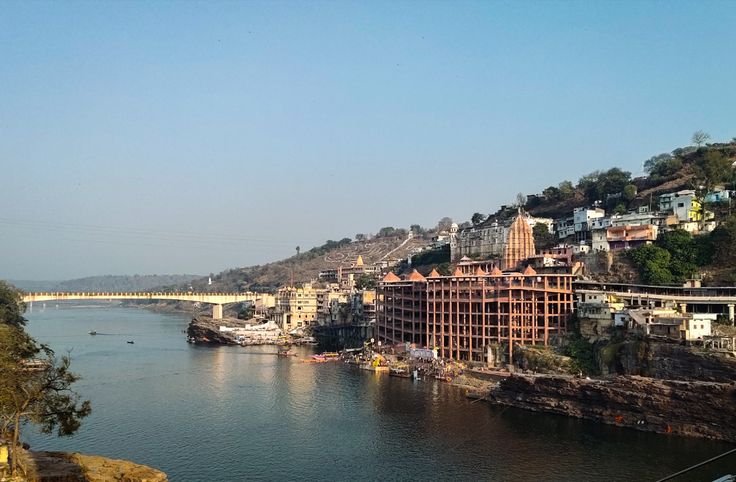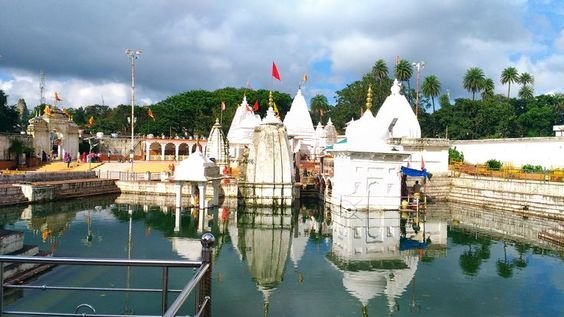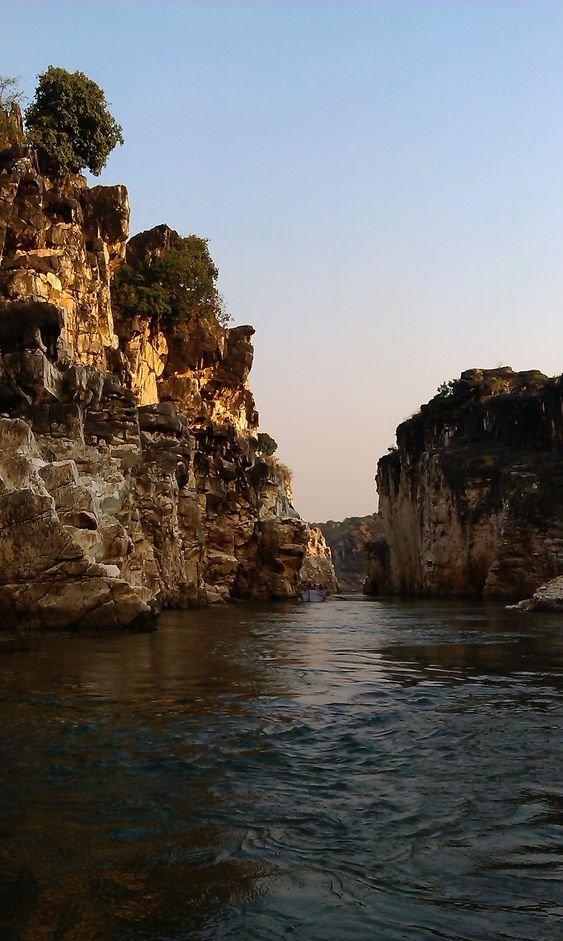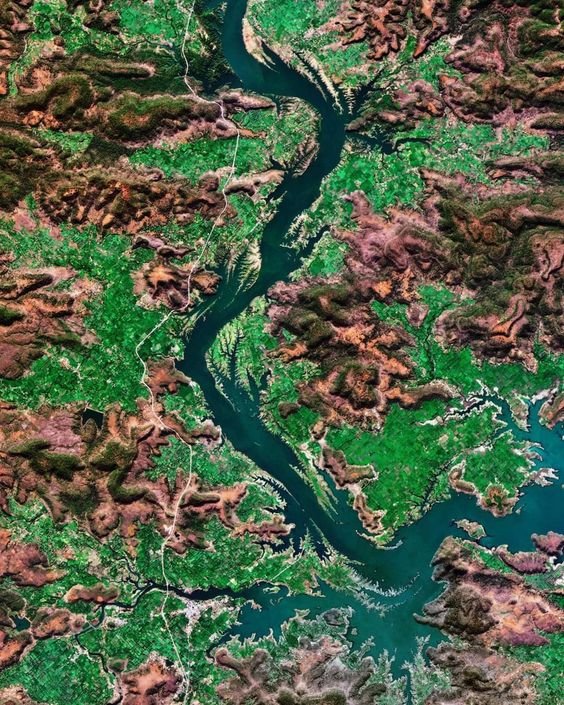Narmada River: The Sacred Jewel of Central India

Narmada River is termed the “Lifeline of Madhya Pradesh.” It is very significant culturally, historically, and even spiritually for Indians. The river passes through the heart of the country and symbolizes than a geographical feature: it symbolizes a river people love and about which myths and legends are woven, religious rituals have been based, and movements to save it have been designed. The pristine waters of the river stretch 1,312 kilometres in length across many vast expanses of plains, valleys, and forests, from the Amarkantak Plateau in the State of Madhya Pradesh to the Gulf of Khambhat in Gujarat.

In Hinduism, Narmada is one of the seven sacred rivers and is often worshiped as a goddess, a symbol for purification, fertility, and life. The pilgrim’s throng to its banks for religious ceremonies; they believed that taking a bath in its waters washes away their sins. The river is used for drinking water by millions and supports an extensive network of irrigation systems, dams, and hydroelectric projects. In the face of such challenging tasks, however, rapid development and dam construction have threatened the health of the river, while creating environmental challenges and movements like the Narmada Bachao Andolan as an icon of environmental and human rights activism.

Origin of the Narmada River
The Narmada River rises on the Amarkantak Plateau in the central Indian state of Madhya Pradesh at an elevation of some 1,057 m. This is a considered pilgrimage site and marks the confluence of the Vindhya and Satpura mountain ranges. The river flows west for its entire length; it cuts through the highlands of the central region of India before entering the plains of Gujarat and finally empties into the Arabian Sea near the Gulf of Khambhat.
The Narmada Basin covers about 98,796 square kilometres of area and incorporates several vital states namely Madhya Pradesh, Gujarat, and Maharashtra. This is a rather unique river since it is one of the very few rivers in India that actually flow west; all other major rivers, however, generally flow in an easterly direction. Some of its tributaries, amongst which are the Bana, Tawa, and Hiran Rivers, contribute to this importance for irrigation, drinking water, and hydroelectric power for the region.

The Narmada makes one of India’s most beautiful natural landscapes as it beautifully carves through the Marble Rocks of Bhedaghat, a gorge near Jabalpur. Through its passage through the dense forests and diversified terrain where millions of fishermen, farmers, and tourist livelihoods are dependent, it adds to the region’s biodiversity.
Mythology and Historical Importance in Hinduism
In Hindu mythology, Narmada is a river considered a living goddess. According to Hindu belief, one would be cleansed of all the sins by just seeing the Narmada. This kind of devotion has been mentioned in the ancient texts-Puranas, Mahabharata, and Ramayana.
One version of the legend states that Narmada was born from Lord Shiva’s sweat, as he performed the Tandava dance, symbolising power and purity. So many temples dedicated to Lord Shiva can be found on its banks.

Among other legends related to the river, there is the legend of King Kartavirya Arjuna, who was blessed by Narmada that made him invincible. According to the legend, the mythological king owned a thousand arms and controlled all the territories along the Narmada. As Shiva Purana mentions, bathing in the Narmada is equivalent to performing penance in the Ganges for centuries.
The excellent pilgrimage known as the Narmada Parikrama, wherein devotees walk along the entire river length, is performed to this day. The journey could take several months and was considered to be a spiritual path toward salvation.
In addition to mythological importance, the Narmada has played a crucial role in the history of Central India. The banks of this river home many ancient kingdoms, whose fertile plains provided them with grounds for agriculture and its natural boundary against invaders. The outline of its historical significance consists of the numerous temples, forts, and archaeological sites along the river. Towns like Maheshwar, which was formerly a capital of Holkar dynasty, were centres of culture and commerce due to their proximity to the Narmada. Today, these towns are leading centres of religions and cultures.

Environmental Challenges Due to Dams and Development
Despite its cultural and religious significance, the Narmada River has not escaped the pressures of modern development. In the mid-20th century, efforts to harness the river’s water for irrigation and power generation led to a series of dam projects along its course. The most notable of these is the Sardar Sarovar Dam, part of the Narmada Valley Development Project, which aims to provide water to millions across Gujarat, Madhya Pradesh, and Maharashtra. This project was envisioned as a means to bring economic prosperity to the region, but it has come at a considerable cost.
One of the most significant environmental challenges facing the Narmada is the disruption of its natural flow caused by the construction of these large dams. The dams have submerged thousands of hectares of forests and agricultural land, displaced indigenous communities and threatened local wildlife. The river’s rich biodiversity, including various fish and plant species, has been severely impacted by altered water levels and reduced downstream flow.

Additionally, the construction of the dams has led to increased water salinity and the drying up of sections of the river during non-monsoon months, affecting fishermen, farmers, and local communities. Groundwater depletion has also become a pressing issue in areas that depend on the Narmada for irrigation. This disruption raises concerns about the long-term sustainability of these projects and the potential impact of climate change on the river’s future.
The Narmada Bachao Andolan Movement
These environmental issues faced in the building of a dam in the Narmada River have faced stiff resistance. The movement dubbed Narmada Bachao Andolan (NBA) that was kicked off in 1985 by Medha Patkar, further supported by campaigners like Arundhati Roy among others, was initiated with an aim of protesting the involuntary displacement over the scheme of the Sardar Sarovar Dam. However, it has become a campaigning force to fight for the rights of the displaced, to ensure environmental protection and social justice.
The NBA really exposed the human cost of large dam projects, revealing to the world that the poorest groups would benefit less from them. Thousands of families-including tribal and rural ones-were uprooted without fair compensation, losing houses, lands, and cultural heritage.

The NBA’s activism took the battle into the courts, and the rest of the world took notice. In a major victory for it, the World Bank withdrew its funding for the Sardar Sarovar Dam after an independent evaluation showed negative social and environmental impacts.
With so much international attention created, the dam construction went on, and so does the struggle for the Narmada and its communities to this day. NBA remains a landmark example of grassroots activism over projects threatening people as well as the environment.
Conclusion
The Narmada River is much more than a mere watercourse; it reflects an ancient store of life, spirituality, and Indian tradition, deeply interwoven with the religious, cultural, and social fabric of India. Its mythical origin and stories talk about the importance rivers have played in shaping spiritual and practical lives of millions. Rivers such as these have been creating foundations for civilizations since thousands of years, providing sustenance for agriculture and culture on fertile banks and forming human life as we know it today.

However, the Narmada faces formidable environmental problems from dam constructions and other developmental activities. This situation shows the very fine relationship between the economic development and ecological survival. Although dams such as Sardar Sarovar have ensured water and electricity supply to millions, it has also displaced people who originally inhabited the riverbank.
The Narmada Bachao Andolan is perhaps the best example of people’s movements speaking in the voices of displaced populations and for environmentally responsible development. For the Narmada River, the future in this balancing act of harnessing its resources for the sake of development goals in India depends on being able to balance the use of the river against the necessity to defend both its ecological and cultural value.
It is still the sacred treasure of Central India, of prime spiritual, cultural, and ecological importance. Whether viewed as a goddess, a lifeline, or as a battleground for environmental justice, the Narmada remains important.


